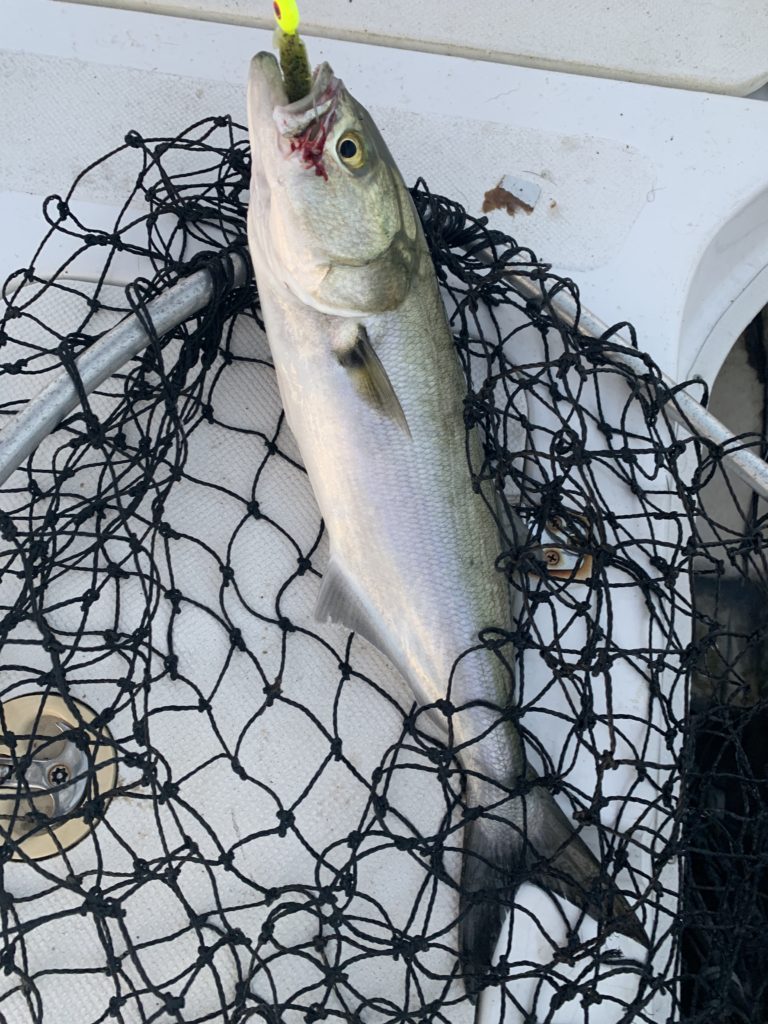


Even the measures adopted at the October meeting, a one-fish bag and 28 to 35-inch slot limit on the coast, and a one-fish bag and 18-inch minimum size in Chesapeake Bay, will probably not be implemented by many states as a result the planned 18 percent fishing mortality reduction will probably not be achieved. In October 2019, the Bass Board adopted management measures intended to end overfishing by reducing fishing mortality by 18 percent, but it has yet to take any action to rebuild the stock within the next 10 years. The assessment’s findings triggered additional provisions of the management plan that required the Bass Board to end overfishing within one year, and rebuild the spawning stock biomass in no more than ten years.

The Bass Board received formal notification that the striped bass stock was both overfished and experiencing overfishing when the final version of a benchmark stock assessment was presented at its April 2019 meeting, although it became aware of those problems when the initial version of the assessment became public six months earlier. In 2014, it failed to comply with an explicit provision of the management plan that required the Bass Board to initiate a 10-year rebuilding program to restore the female spawning stock biomass, which had declined well below the target level in the face of rising fishing mortality.
#Record bluefish update
Thus, in 2011, the Bass Board took no management action after being warned in a stock assessment update that striped bass would become overfished by 2017. As a result, the ASMFC’s various species management boards have very broad discretion to act as they choose, even if such actions are completely arbitrary, contrary to the Charter, or ignore the clear requirements of a fishery management plan. However, there is no statute that legally obligates the ASMFC to adhere to the mandates set forth in the Charter, and in 2010, a federal appellate court found that ASMFC’s fishery management actions were not subject to judicial review. The ASMFC’s Interstate Fisheries Management Program Charter (Charter) states that fishery management plans “must include conservation and management measures that ensure the long-term biological health and productivity of fishery resources under management,” that such plans “shall be designed to prevent overfishing,” and that in the case of overfished stocks, “programs shall be designed to rebuild, restore, and subsequently maintain such stocks so as to assure their sustained availability in fishable abundance on a long-term basis.” It also states that “Conservation programs and management measures shall be based on the best scientific information available.” The position taken by a majority of members in each state’s caucus decides how that state will vote on the issue (in the event that no majority position emerges, the state will cast a “null vote” that has no effect on the final decision). When any matter comes before the Bass Board for a vote, the members of each state delegation first caucus, with each member taking a position on the issue in question.
#Record bluefish professional
Although there are some exceptions, the legislative appointee’s proxy and governor’s appointee are typically not professional fisheries managers, but instead fishermen or people connected in some way to the fishing industry. Each of the states has three representatives on that board, which must include a state fisheries manager, who serves as the administrative appointee, a legislative appointee, who often appears by proxy, and a governor’s appointee. Every coastal state between Maine and North Carolina, including Pennsylvania and the District of Columbia, along with the Potomac River Fisheries Commission, National Marine Fisheries Service (NMFS), and United States Fish and Wildlife Service, have one vote on the Bass Board. Striped bass are managed by the states, through the Atlantic States Marine Fisheries Commission’s (ASMFC) Atlantic Striped Bass Management Board (Bass Board). They frequently prey on the same schools of bait, with the bluefish slashing through the harried forage, while the bass follow beneath, feeding on the dead and the wounded.īut that’s where the similarities end, because the primary responsibility for managing striped bass and bluefish belong to two different fishery management bodies, that operate under different laws, take different approaches to fishery management, and have very different records of success. They’re both premier inshore gamefish of the New England and mid-Atlantic coasts.


 0 kommentar(er)
0 kommentar(er)
